Stages of Crawling: When and How They Happen

- It’s normal for babies to skip the crawling stages and start walking.
- There are many different crawling styles, and your baby might pick more than one of them.
- Some babies prefer moving sideways instead of crawling in a straight line.
- Open spaces and fun games can help develop your baby’s crawling skills.
Baby milestones can feel like a massive competition in mommy circles. While there are some developmental marks your baby must hit, you don’t need to feel inferior if your child does things differently.
Your baby will learn to crawl in their own way and at their own pace. The crawling style your little one chooses will also influence when they start moving. If your baby is already sitting but shows no interest in crawling, there’s no need for concern. Some babies crawl on their bellies before they can sit, while others support their weight before they show interest in moving around.
You can consult your pediatrician if you’re worried that your baby isn’t meeting their developmental milestones.
When Do Babies Start Crawling?
When your baby starts crawling will depend on their development. Some babies start rocking, swaying, or pulling themselves around as early as 5 months. Most babies only enter the stages of crawling when they’re over 6 months old.
Physical limitations also affect the age of crawling. If your baby has hearing problems, hormone disorders, or was born blind, they might crawl later than their peers.
Kids develop at different ages from birth. Your baby might try to move from 4 months, but the average crawling age is 8 months. Some babies only start crawling later.

Should I Worry If My Baby Isn’t Hitting Their Crawling Milestones?
It’s perfectly normal that some babies skip crawling altogether. If your kid decides to sit and then walk, you don’t have to worry!
Crawling allows babies to develop their balance and coordination. It’s important to keep a close eye on your child to ensure they reach all their developmental milestones. Many babies don’t follow classic crawling movements but still develop essential motor skills.
Progress can mean scooching on their bum or rocking back and forth before standing up. Your little one doesn’t need to hit traditional crawling milestones to gain independence and develop walking skills.
How to Help Your Baby Learn to Crawl
Crawling is natural. You don’t need to teach your baby how to crawl, but there are activities you can encourage to help them reach this milestone. Setting their environment up in the right way also helps!
Focus On Tummy Time
You can start placing your baby in the proper position for tummy time about a week after they’ve entered this world. Begin working tummy time into your schedule when your newborn’s umbilical cord falls off.
Tummy time can help your baby recognize and practice movement, prevent flat spots on the back of their head, and introduce them to new sleeping positions. Your little one will build their upper body strength, develop motor skills, and get a taste of independence.
If you do tummy time activities 2-3 times a day, they’ll soon get the hang of it!
Create Curiosity
You can buy or create a crawling tunnel for your baby to spark curiosity! Whatever crawling stage your baby is in, setting up a tunnel-like obstacle course will encourage them to start moving and explore.
The tunnel should be colorful and have a comfortable surface so your little one can easily move on their belly, knees, or bum.
You can also use different crawling toys to show your baby how to crawl or encourage them to chase after.
Create Open Spaces
Your baby will have an easier time practicing to move if they have space. When babies start crawling, many stay on their bellies for a while. You should create an open and comfortable area for them to belly crawl.
Smooth surfaces work best when babies begin to move. If they’re dressed in long sleeves and pants, they’ll easily glide over the floor, pulling themselves along. You can invest in a crawling mat when your baby transitions to their hands and knees.
Play Crawling Games
Babies learn by studying what their parents do. You should play crawling games with your child to help them recognize crawling movements.
Crawling starts when babies move forward in any way. You can get on the floor with your baby, place objects a few feet away from them, or motivate them to move towards you.
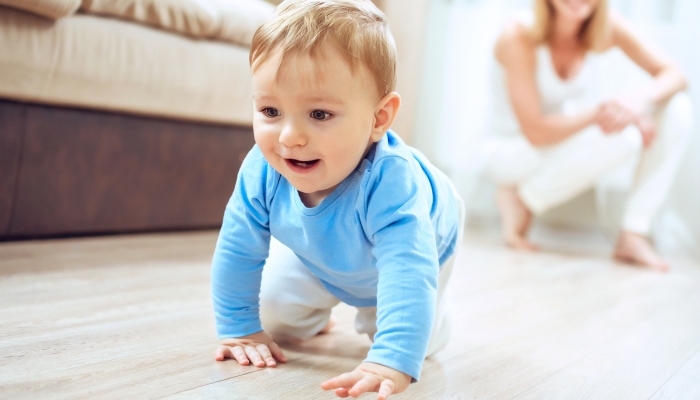
Different Types of Crawling
Babies figure out how to move in different ways. When your little one enters the crawling phase, you can expect to see some unfamiliar movements. If your baby doesn’t use a classic crawl, you might see one of these:
The Commando Crawl
Most babies start crawling with their bellies on the floor. Those who prefer this commando style do mini push-ups and pull themselves forward with their arms. Some babies will drag their legs along, while others use them to move even faster.
The commando or belly crawl helps babies understand movement. Some will stay in this position until they learn to walk, but yours might transition to a different crawling style. You should encourage your baby to get on their hands and knees to develop core strength.
The Bottom Scoot
Bottom scooters move in a seated position. They use their arms to pull forward or push backward. Babies scoot when sitting with their legs wide apart is comfortable. They choose to stay upright because it helps them move quickly and keeps their hands free to pick a toy up along the way.
You can help your baby transition from bum shuffling to the classic crawl by laying them belly down on a rolled-up blanket or firm pillow.
The Bear Crawl
Like traditional crawling, babies crawl with their bellies off the floor, moving one arm and the opposite leg simultaneously. The only difference is that their arms and legs stay unbent, mimicking a bear walk.
Babies tend to transition to this style when they need more speed! Bear crawling allows them to move faster and stand up easier.
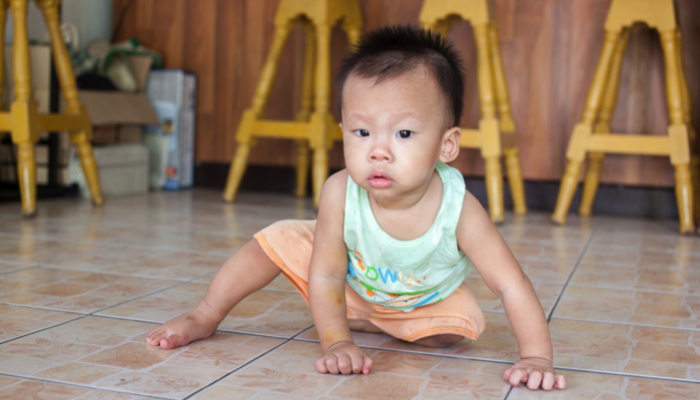
The Crab Crawl
Crab crawling is a backward or sideways movement where babies keep one knee bent under their body while their other leg is out. Every baby does this in their own way. Your baby might choose a backward crawl, move to one side, or do both!
It might look like your baby is still figuring out how to crawl, but chances are they prefer these positions for speed.
The Rolling Crawl
Some babies never learn to crawl and prefer rolling to get around. If your baby only rolls, there’s nothing to worry about. They’ll still develop both sides of their body, strengthening their core, arm, and leg muscles. They’ll also become aware of their body while mastering balance.
The Classic Crawl
During the many stages of crawling, your baby might end up doing a classic crawl. This traditional crawling method is what most parents expect, but only a few see.
With this crawling style, your baby will push themselves up on bent hands and knees. They’ll move forward with alternating legs and arms.
There’s some specific benefits for children who classically crawl from the start. If your baby chooses an asymmetrical crawling style and doesn’t transition to this one later, you can have them checked for proper physical and mental development.
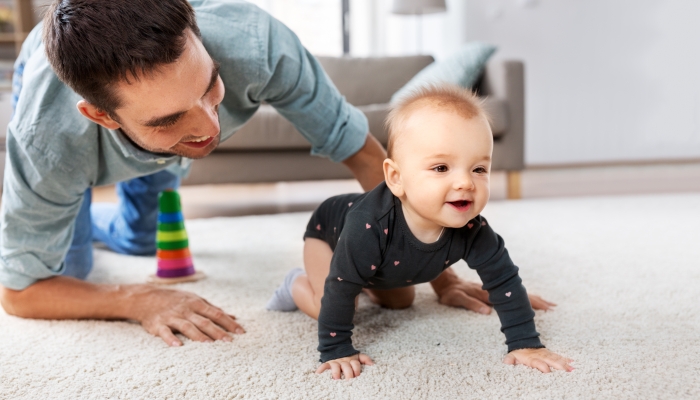
The 5 Stages of Crawling
Stage 1: Tummy Time
If you’ve heard that tummy time is necessary, you better believe it! Crawling starts with tummy time. These supervised sessions your baby spends awake on their stomach will help them develop the core, neck, and shoulder strength they need to move.
As your baby progresses, they’ll learn to hold themselves upright with elbow support.
Stage 2: Movement
Once your baby feels comfortable on their tummy, you might notice them exploring movement. This can be by:
- Swaying from side to side.
- Rocking back and forth.
- Rolling.
- Reaching out in different directions.
Stage 3: Body Support
Most babies choose their first from the different crawling styles during this stage. Your baby might support their body in the air with bent arms and legs or lift their neck while readying for an arm-pull forward.
If your baby supports their whole body in the air, they’re likely to do a classic or bear crawl. Babies who stay on their elbows might choose a belly crawl or roll, and those who lay flat may want to scoot.
Stage 4: Moving
You’ll know your baby’s crawling style when they start moving. As they explore their world, this style might change. They can also transition between different styles for speed and reach.
Stage 5: Transitioning
Not all babies crawl before they walk, but if yours do, their crawling stage will near an end when they start standing independently on their feet.
Some crawling styles make it easier for babies to transition to standing. If your baby supports themselves against the coffee table, they’re definitely starting to practice other motor skills. They’ll still crawl for a while, so don’t expect them to start walking up and down the stairs soon.
Babies near walking when they can stand up straight without support. If yours does this, you won’t have a crawling baby much longer!
Some Advice
A baby’s development is influenced by things you have control over and some you don’t. You can do movement activities, play games, and create an ideal environment to help your baby develop their crawling skill. But, if your baby was born with a disability, you can’t change how this impacts them.
Some babies don’t meet their crawling milestones as they should. If you’re concerned, you should contact your pediatrician to determine if intervention is needed for gross motor delays.
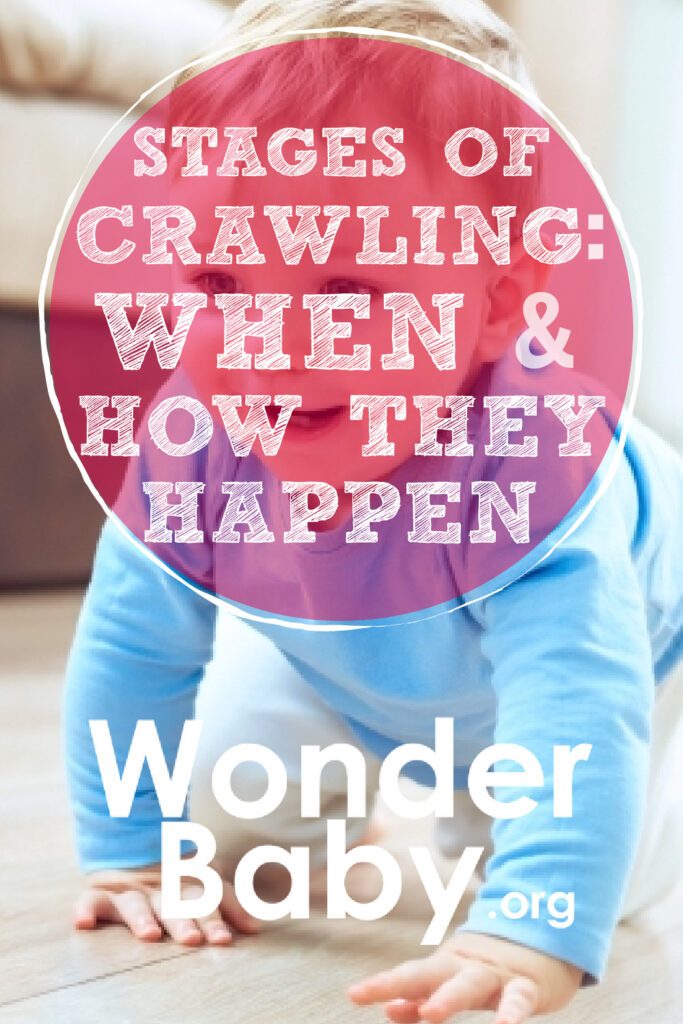
Related Posts
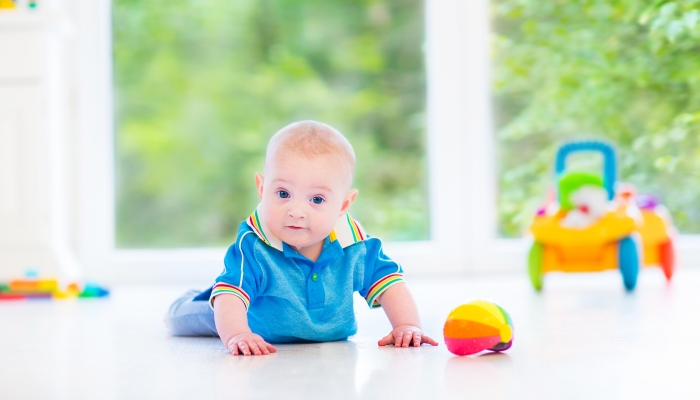
Crawling
Baby Hates Tummy Time? Try These Alternatives Instead!
If your baby hates tummy time, there’s hope! These 5 alternatives will keep your baby smiling while on their belly.
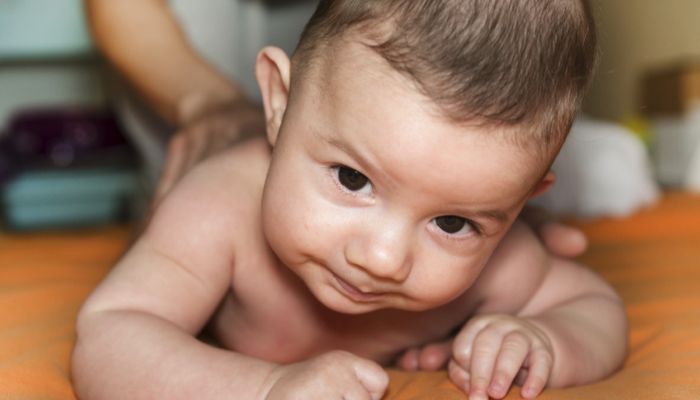
Crawling, Visual Impairment
When does a blind baby start crawling?
When does a blind baby usually start to crawl? When should I start to be worried that there is another issue besides blindness?
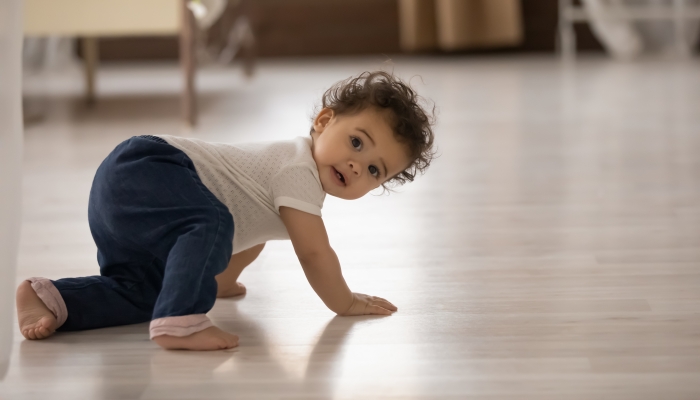
Crawling
Asymmetrical Crawling in Babies: Should You Be Concerned?
Let’s take a closer look at asymmetrical crawling in babies and when you should contact a pediatrician or pediatric orthopedic doctor for more advice.